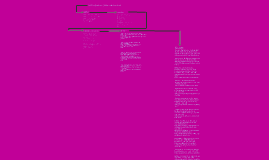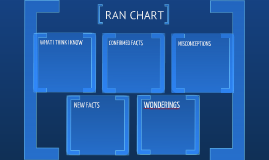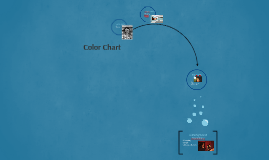PRISM PRESENTATION
Transcript: CHOICE: MAGNET, PRIVATE & CHARTER Caroline Chambless Dena Turnage Mary Garner Abby Wilkerson •What are the qualifications for teachers in NC? (Caroline) •All teachers in magnet, private, and charter school have to be certified or licensed to teach in core classes. (Caroline) •If parents assume that all teachers are certified to teach they could be placing their child in a school where the education that the parents are assuming they are getting in not being given. (Caroline) •Charter- NC law does not require teachers to be certified Private- Teachers do not have to have a license or be certified; minimum bachelor’s degree Magnet- Magnet are considered public schools so the requirements are the same as a public school (Caroline) •What are the requirements for student admission in NC? (Abby) •Students applying for admission to magnet, private, and charter schools have specific requirements that they must reach to be considered for admission. (Abby) •Parents that have children with disabilities may feel that their child can’t meet these requirements in order to be admitted so children with disabilities are less likely to apply to these schools. (Abby) •Charter- The number of available seats in the specific grade level applying for Private- Varies; testing, interviews, previous test score, etc. Magnet- Test scores or minimum specific performance based requirements are necessary (Abby) •What are the money circumstances in NC? (Tuition, assessments, salary, funding, etc.?) (Mary) •The teachers from magnet, private, and charter schools are not equally paid. (Mary) •More teachers would be applying to the schools that paid a higher salary which would lead to less teachers applying to work at schools with a smaller salary. (Mary) •Charter- free tuition; average teacher salary is $39,000; funded by state, federal, and private funds Private- unlimited tuition; teacher salary varies on experience; generates own funding Magnet- interdistrict may or may not charge tuition for students; teacher salary average $38,000; funded by state and local funding (Mary) QUESTIONS: •How do magnet, private, and charter schools try to create diversity in NC? (Dena) Assumptions: •Private schools have the least diverse student bodies compared to magnet and charter schools. (Dena) Implications & Consequences •Students of private schools may be more sheltered of different cultural backgrounds than their own. (Dena) Answers: •Charter- attracting students from diverse backgrounds to represent different areas Private- attracting African American teachers in order to create diversity Magnet- emerged in US to remedy racial segregation in public schools (Dena) Sources: "Answer to FAQS Regarding "Highly Qualified" Teacher ." Public Schools of North Carolina. State Board of Education, n.d. Web. 4 Dec 2011. <http://www.dpi.state.nc.us/nclb/highly/faqs/>. "General Issues." NC Alliance for Public Charter Schools advancing quality eduation. NC Alliance for Public Charter Schools, 2011. Web. 4 Dec 2011. <http://www.nccharters.org/about-us/faq/>. McKinney, Carolyn. "North Carolina Professional Teaching Standards." North Carolina Professional teaching Standards Commission\. N.p., n.d. Web. 4 Dec 2011. <http://dpi.state.nc.us/docs/humanresources/district-personanel/evaluation/standardsteacher.pdf>. "Becoming a Teacher in North Carolina." Teacher World. Teacher World, n.d. Web. 4 Dec 2011. <http://teacher-world.com/statepages/North Carolina.html>. "Application Process and Schedule." wake County Public School System. WCPSS, 2011. Web. 4 Dec 2011. <http://www.wcpss.net/magnet/application_process.html>. "Admission to Private Schools: A-Z." Private School Review. Privae School Review: Private Elementary Day School and High Schools, 2011. Web. 4 Dec 2011. <http://www.privateschoolreview.com/articles/210>. "State Board Approves Charter School Growth." NC Alliance for Public Charter Schools advancing quality eduation. N.p., 02/08/2011. Web. 4 Dec 2011. <http://www.nccharters.org/?s=admissions&submit=Search>. Potter, H. P. (2011, January 31). Equity and diversity: The next challenge for charter schools. Retrieved from http://takingnote.tcf.org/2011/01/equity-and-diversity-the-next-challenge-for-charter-schools.html Marshall, E. (2011, March 23). Opportunities in charter schools. Retrieved from http://www.teachersofcolor.com/2011/03/opportunities-in-charter-schools/ Burns, Melinda. "Are Charter Schools a Choice for Segregation?." Miller McCune. N.p., November 28, 2010. Web. 4 Dec 2011. http://www.miller-mccune.com/culture-society/are-charter-schools-a-choice-for-segregation-25575/. "Private School Jobs." Private School Reveiw. N.p., December 02, 2007 . Web. 4 Dec 2011. http://www.privateschoolreview.com/articles/6. Medely, Joel. "Charter School." Office of Charter Schools. N.p., n.d. Web. 4 Dec 2011. <http://www.privateschoolreview.com/articles/6>.

















